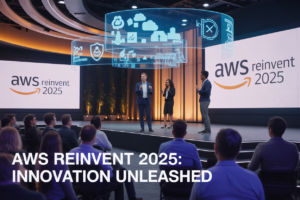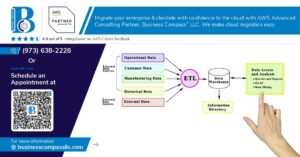Building modern applications that can handle traffic spikes and grow with your business isn’t just nice to have—it’s essential. AWS ECS, Amazon EC2, and Auto Scaling work together to create scalable cloud infrastructure that adapts to your needs automatically.
This guide is designed for developers, system administrators, and cloud architects who want to master these foundational AWS container services and cloud computing fundamentals. Whether you’re moving your first application to the cloud or optimizing existing systems, you’ll learn practical strategies for building resilient architecture.
We’ll start by exploring how Amazon EC2 serves as the backbone of your cloud infrastructure, giving you the compute power you need. Then we’ll dive into AWS container services and show you how Amazon ECS simplifies container orchestration AWS without the complexity of managing underlying systems. Finally, you’ll discover how Auto Scaling and EC2 auto scaling groups create the perfect balance between performance and cost optimization.
By the end, you’ll have the knowledge to implement AWS architecture best practices and build cloud scalability solutions that grow with your applications while keeping costs under control.
Understanding Amazon EC2: Your Foundation for Cloud Computing
What EC2 Offers for Modern Applications
Amazon EC2 serves as the backbone of cloud computing, providing virtual servers that run your applications with complete control over the operating system. You get the flexibility to choose from hundreds of instance types optimized for different workloads, whether you’re running web applications, databases, or machine learning models. EC2 instances can be launched in minutes, scaled up or down based on demand, and configured with custom security groups and networking settings. This elastic compute cloud foundation supports everything from simple websites to complex enterprise applications, making it the go-to choice for businesses migrating to AWS infrastructure.
Key Features That Drive Business Value
EC2’s robust feature set delivers measurable business impact through enhanced performance and operational efficiency. The service offers multiple storage options including EBS volumes for persistent data and instance store for temporary high-performance storage. Built-in monitoring through CloudWatch provides real-time insights into instance performance, while placement groups optimize network performance for clustered applications. Security features like IAM roles, VPC integration, and encryption at rest protect your workloads. The ability to create custom AMIs (Amazon Machine Images) streamlines deployment processes, reducing time-to-market for new applications and ensuring consistent environments across development, staging, and production.
Cost-Effective Compute Solutions
EC2’s flexible pricing models help organizations optimize their cloud spending while maintaining performance standards. On-Demand instances provide pay-as-you-go flexibility perfect for unpredictable workloads, while Reserved Instances offer up to 75% savings for steady-state applications. Spot Instances deliver up to 90% cost savings for fault-tolerant workloads like batch processing and data analysis. The Savings Plans option provides additional flexibility by offering lower prices in exchange for consistent usage commitments. Right-sizing recommendations and AWS Cost Explorer help identify optimization opportunities, ensuring you’re not paying for unused capacity while maintaining the performance your applications need.
Global Infrastructure Advantages
AWS’s global infrastructure gives EC2 users unmatched reach and reliability for their cloud architecture. With availability zones spanning multiple continents, you can deploy applications close to your users, reducing latency and improving user experience. Each availability zone operates independently with its own power, cooling, and networking, providing built-in redundancy for high availability applications. Cross-region replication capabilities enable disaster recovery strategies and global application distribution. This infrastructure foundation supports Auto Scaling groups that can span multiple zones, ensuring your applications remain available even during localized outages while maintaining optimal performance for users worldwide.
Amazon ECS: Simplifying Container Management at Scale
Container Orchestration Made Easy
AWS ECS transforms complex container management into a streamlined experience. The service automatically handles cluster management, scheduling, and load balancing across your EC2 instances. You can deploy containerized applications without worrying about the underlying infrastructure complexity. ECS manages container placement, monitors health, and replaces failed containers automatically, making container orchestration accessible to teams of all skill levels.
Integration Benefits with AWS Ecosystem
ECS seamlessly connects with other AWS services, creating a powerful cloud architecture foundation. Integration with Application Load Balancer enables intelligent traffic distribution, while CloudWatch provides comprehensive monitoring and logging capabilities. The service works natively with IAM for security, VPC for networking, and AWS Fargate for serverless container execution. This tight integration eliminates the need for third-party tools and reduces operational overhead significantly.
Task Definition and Service Management
Task definitions serve as blueprints for your containerized applications, specifying CPU, memory, networking, and storage requirements. Services ensure your desired number of tasks run continuously, automatically replacing unhealthy instances. You can update services with zero downtime using rolling deployments, and ECS handles the orchestration behind the scenes. This approach provides granular control over application behavior while maintaining simplicity in management workflows.
Security and Compliance Features
ECS implements multiple security layers to protect your containerized workloads. Task-level IAM roles ensure containers access only necessary AWS resources, while VPC integration provides network isolation. The service supports encryption at rest and in transit, meeting enterprise compliance requirements. Security groups and NACLs offer additional network protection, and AWS Config helps maintain compliance posture across your container infrastructure.
Auto Scaling: Achieving Perfect Resource Balance
Automatic Capacity Adjustment Benefits
Auto Scaling Groups automatically adjust EC2 instances based on demand patterns, removing manual intervention from capacity management. When traffic spikes occur, new instances launch within minutes to handle increased load. During quiet periods, unnecessary instances terminate automatically, preventing resource waste. This dynamic approach ensures your AWS infrastructure matches actual usage requirements without human oversight. Health checks continuously monitor instance performance, replacing failed servers before users notice service degradation. The system responds to CloudWatch metrics, scaling based on CPU usage, network traffic, or custom application metrics you define.
Cost Optimization Through Dynamic Scaling
EC2 auto scaling groups directly impact your AWS bill by eliminating idle resources during low-demand periods. Rather than maintaining peak capacity 24/7, you pay only for instances actively serving traffic. Scheduled scaling policies handle predictable patterns like business hours, pre-scaling before expected traffic increases. Spot instances integrate seamlessly with Auto Scaling, providing up to 90% cost savings for fault-tolerant workloads. Mixed instance types spread capacity across different EC2 families, optimizing price-performance ratios. Target tracking policies maintain specific metrics while minimizing instance count, balancing cost efficiency with performance requirements.
Performance Consistency Under Variable Load
Auto Scaling maintains consistent application performance regardless of traffic fluctuations by distributing load across healthy instances. Application Load Balancers work with scaling groups to route requests only to available servers, preventing overload scenarios. Warm-up periods allow new instances to initialize properly before receiving full traffic loads. Cool-down timers prevent rapid scaling oscillations that could destabilize your cloud architecture. Multi-AZ deployment through Auto Scaling ensures high availability even during individual zone failures. ECS services leverage Auto Scaling for container-level scaling, maintaining optimal task distribution across your scalable cloud infrastructure while preserving response times.
Building Scalable Architecture with Integrated Services
Connecting EC2, ECS, and Auto Scaling Effectively
Creating a robust scalable cloud infrastructure requires seamless integration between Amazon EC2, ECS, and Auto Scaling services. Start by configuring ECS clusters with EC2 launch types, enabling container workloads to run on managed compute instances. Deploy Auto Scaling groups that automatically adjust EC2 capacity based on ECS service demands, ensuring optimal resource allocation during traffic spikes. Configure service-linked roles to allow ECS tasks to communicate with EC2 instances and Auto Scaling policies. Set up CloudWatch metrics integration to trigger scaling events based on CPU utilization, memory consumption, or custom application metrics.
Load Balancing for Optimal Distribution
Application Load Balancers (ALB) serve as the traffic distribution layer for your containerized applications running on ECS. Configure target groups to route requests across healthy container instances, enabling path-based and host-based routing rules. Implement sticky sessions when needed for stateful applications, while leveraging connection draining during scaling events. Set up health checks at both the load balancer and ECS service levels to ensure traffic only reaches healthy containers. Cross-zone load balancing distributes requests evenly across availability zones, improving fault tolerance and reducing latency for end users.
Monitoring and Health Check Implementation
Comprehensive monitoring forms the backbone of reliable AWS architecture best practices. Deploy CloudWatch Container Insights to track ECS task performance, memory utilization, and network metrics in real-time. Configure custom CloudWatch alarms that trigger Auto Scaling actions based on application-specific thresholds like queue depth or response times. Implement ECS service health checks with appropriate grace periods to prevent premature task termination during deployments. Use AWS X-Ray for distributed tracing across microservices, helping identify bottlenecks in your container orchestration AWS setup. Set up SNS notifications for critical alerts and integrate with third-party monitoring tools for enhanced observability.
Network Configuration Best Practices
Design your VPC architecture with public and private subnets across multiple availability zones for maximum resilience. Place ALBs in public subnets while keeping ECS tasks in private subnets with NAT gateways for outbound internet access. Configure security groups with least-privilege principles, allowing only necessary ports between services. Implement VPC Flow Logs to monitor network traffic patterns and detect anomalies. Use AWS PrivateLink endpoints for secure communication with AWS services without internet routing. Enable container-to-container communication through service discovery using AWS Cloud Map, reducing hard-coded IP dependencies in your cloud scalability solutions.
Real-World Implementation Strategies
Planning Your Scalable Infrastructure
Start by mapping your application’s resource needs and traffic patterns. Design your AWS ECS clusters with proper task definitions that specify CPU and memory requirements. Configure EC2 auto scaling groups with metrics-driven policies that respond to actual demand rather than fixed schedules. Plan your container placement strategies across multiple availability zones to ensure high availability. Consider using spot instances for cost optimization while maintaining reserved instances for baseline capacity.
Deployment Patterns for Maximum Efficiency
Blue-green deployments work exceptionally well with ECS services, allowing zero-downtime updates by switching traffic between two identical environments. Rolling updates provide gradual deployments that minimize risk while maintaining service availability. Use Application Load Balancers with target groups to distribute traffic intelligently across your containerized applications. Implement canary releases for critical updates, directing small percentages of traffic to new versions while monitoring performance metrics.
Troubleshooting Common Scaling Challenges
Container startup times can cause delays during rapid scaling events. Pre-warm your application images and optimize Dockerfile layers to reduce initialization overhead. Monitor CloudWatch metrics for CPU throttling and memory pressure that might trigger premature scaling actions. Debug service discovery issues by checking ECS service registrations and load balancer health checks. Address networking bottlenecks by reviewing security group rules and subnet configurations that might limit container communication during peak loads.
Amazon EC2 provides the fundamental building blocks for your cloud infrastructure, giving you the flexibility to spin up virtual servers exactly when and how you need them. ECS takes this a step further by managing your containerized applications seamlessly, removing the headache of orchestration while keeping your apps running smoothly across multiple instances. Auto Scaling acts as your safety net, automatically adjusting resources based on demand so you never pay for unused capacity or experience performance drops during traffic spikes.
When you combine these three services, you create a robust foundation that can handle everything from small startups to enterprise-level applications. The key is starting simple with EC2, containerizing your applications with ECS as you grow, and implementing Auto Scaling policies that match your specific usage patterns. Don’t try to build everything at once – focus on getting one service working well before adding complexity. Your future self will thank you for taking the time to understand these core services, as they form the backbone of virtually every successful cloud architecture on AWS.




















